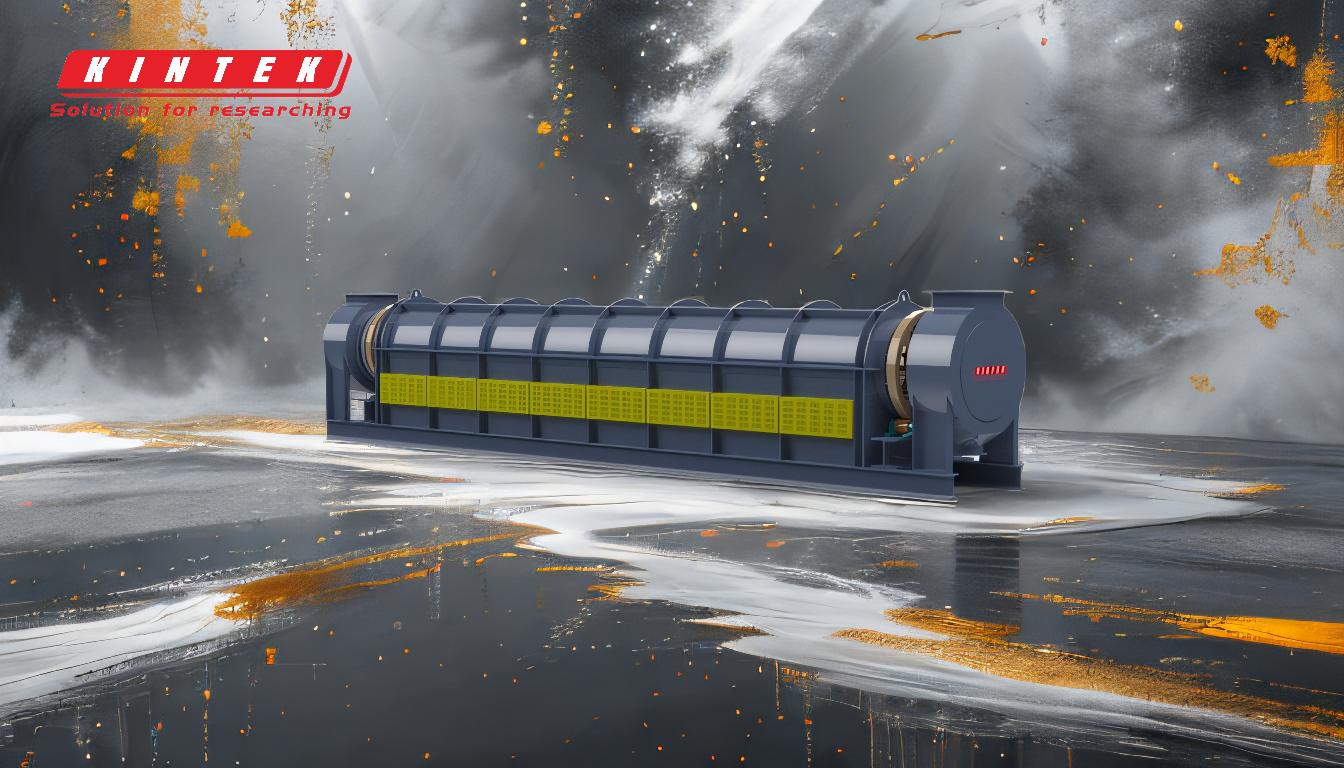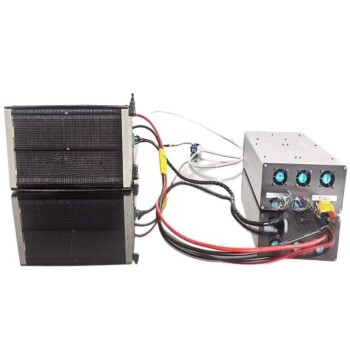Pyrolysis is a thermochemical decomposition process that converts organic materials, such as biomass, into valuable products in the absence of oxygen. The primary products of biochar pyrolysis include solid, liquid, and gaseous phases. Solid products like biochar are used in agriculture, energy, and as sorbents. Liquid products, such as bio-oil and wood vinegar, can serve as alternative fuels or be refined into chemicals. Gaseous products, including syngas and biogas, are often used to generate heat or energy for the pyrolysis process itself. The proportions and characteristics of these products depend on factors like feedstock type, pyrolysis temperature, and process parameters.
Key Points Explained:
-
Solid Products (Biochar or Char):
- Description: Biochar is the solid residue left after pyrolysis, consisting primarily of carbon and ash. It is a stable, porous material with a high carbon content.
-
Applications:
- Agriculture: Used as a soil amendment to improve soil fertility, water retention, and carbon sequestration.
- Energy: Can be used as a solid fuel for heating or electricity generation.
- Sorbents: Effective in adsorbing pollutants from water and air due to its porous structure.
- Formation: Produced under moderate to high pyrolysis temperatures (typically 400–700°C), where organic materials decompose into carbon-rich solids.
-
Liquid Products (Bio-oil, Tar, and Wood Vinegar):
- Description: Liquid products from pyrolysis include bio-oil, tar, and wood vinegar. These are condensable liquids formed during the cooling of pyrolysis vapors.
-
Bio-oil:
- A dark brown, viscous liquid composed of water, organic compounds (e.g., phenols, aldehydes, and levoglucosan), and some solid particles.
- Applications: Can be used as a renewable fuel or refined into biodiesel and other chemicals.
-
Tar:
- A thicker, more viscous liquid containing higher molecular weight compounds.
- Applications: Often used as a binder or in chemical synthesis.
-
Wood Vinegar:
- A watery liquid containing acetic acid, methanol, and other organic compounds.
- Applications: Used in agriculture as a pesticide, herbicide, or soil conditioner.
- Formation: Liquid products are formed during the condensation of volatile compounds released during pyrolysis, typically at lower to moderate temperatures (300–500°C).
-
Gaseous Products (Syngas and Biogas):
- Description: Non-condensable gases produced during pyrolysis, including carbon monoxide (CO), hydrogen (H₂), methane (CH₄), and carbon dioxide (CO₂).
-
Syngas:
- A mixture of hydrogen and carbon monoxide, often with small amounts of methane and other hydrocarbons.
- Applications: Used as a fuel for heat and power generation or as a feedstock for chemical synthesis (e.g., methanol production).
-
Biogas:
- A mixture of methane, carbon dioxide, and trace gases.
- Applications: Can be used directly for heating or upgraded to renewable natural gas.
- Formation: Gaseous products are formed at higher pyrolysis temperatures (above 700°C), where organic materials break down into smaller molecules.
-
Factors Influencing Product Distribution:
-
Feedstock Composition:
- The type of biomass (e.g., wood, agricultural residues, or algae) affects the yield and composition of pyrolysis products. For example, lignin-rich feedstocks produce more biochar, while cellulose-rich feedstocks yield more bio-oil.
-
Pyrolysis Temperature:
- Lower temperatures (300–500°C) favor the production of bio-oil and wood vinegar.
- Higher temperatures (above 700°C) increase the yield of syngas and reduce biochar production.
-
Heating Rate:
- Fast pyrolysis (rapid heating) maximizes bio-oil production.
- Slow pyrolysis (slow heating) favors biochar formation.
-
Residence Time:
- Longer residence times in the pyrolysis reactor increase the conversion of biomass into gases and reduce solid residue.
-
Feedstock Composition:
-
Value-Added Applications:
-
Biochar:
- Enhances soil health and sequesters carbon, contributing to climate change mitigation.
-
Bio-oil:
- Provides a renewable alternative to fossil fuels and can be upgraded to high-value chemicals.
-
Syngas:
- Offers a versatile energy source and feedstock for industrial processes.
-
Wood Vinegar:
- Supports sustainable agriculture by reducing the need for synthetic chemicals.
-
Biochar:
-
Environmental and Economic Benefits:
- Waste Utilization: Pyrolysis converts agricultural and forestry waste into valuable products, reducing landfill use and environmental pollution.
- Renewable Energy: The process produces renewable fuels and reduces reliance on fossil fuels.
- Carbon Sequestration: Biochar application in soils locks away carbon for centuries, helping mitigate climate change.
By understanding the products of biochar pyrolysis and their applications, purchasers and stakeholders can make informed decisions about equipment and consumables, optimizing the process for specific needs and maximizing the value of biomass resources.
Summary Table:
| Product Type | Examples | Applications | Formation Conditions |
|---|---|---|---|
| Solid Products | Biochar | Agriculture (soil amendment), energy (solid fuel), sorbents (pollutant removal) | Moderate to high temperatures (400–700°C) |
| Liquid Products | Bio-oil, Tar, Wood Vinegar | Renewable fuel, chemical synthesis, pesticides, herbicides, soil conditioners | Lower to moderate temperatures (300–500°C) |
| Gaseous Products | Syngas, Biogas | Heat and power generation, chemical feedstock, renewable natural gas | High temperatures (above 700°C) |
Ready to optimize your biomass conversion process? Contact us today to learn more about biochar pyrolysis solutions!













